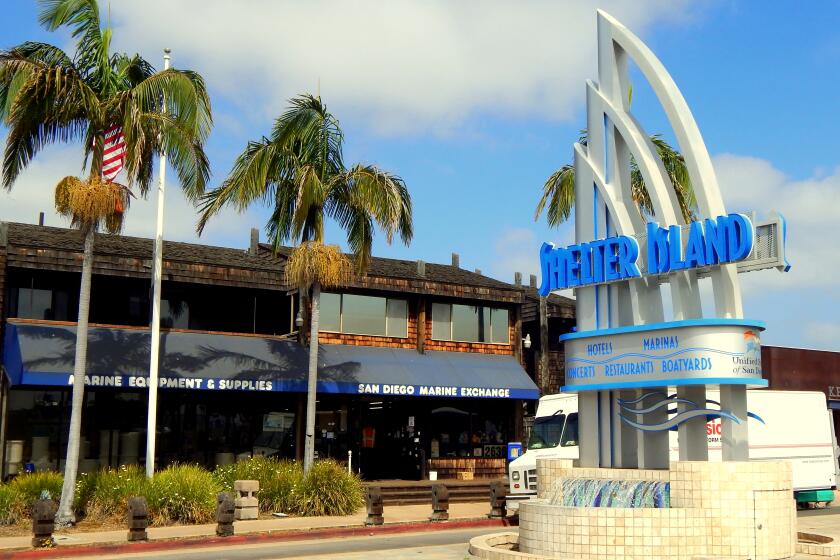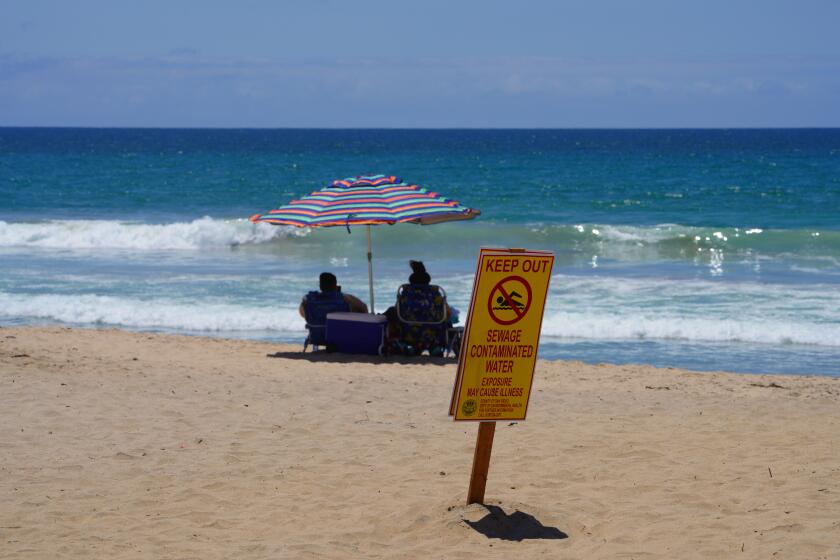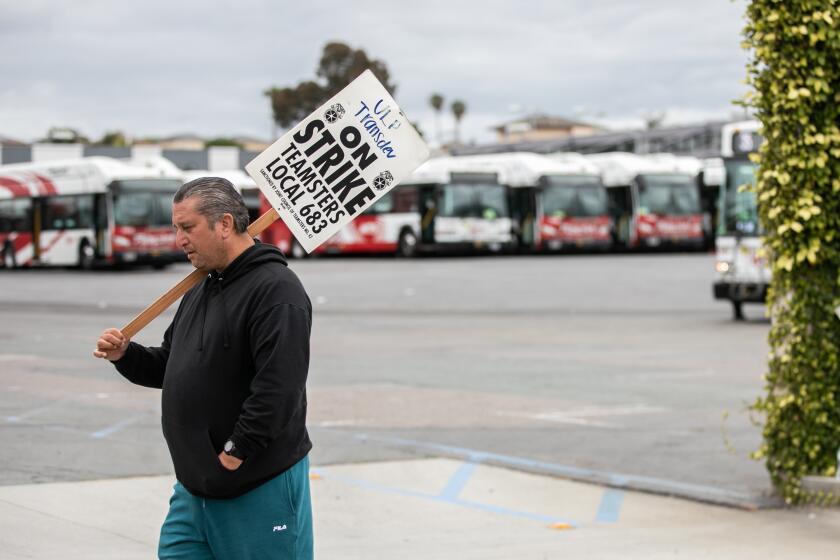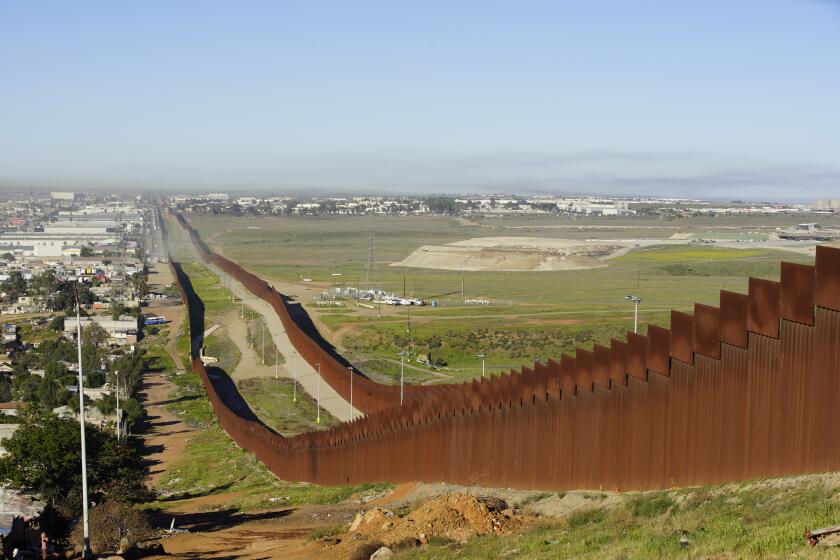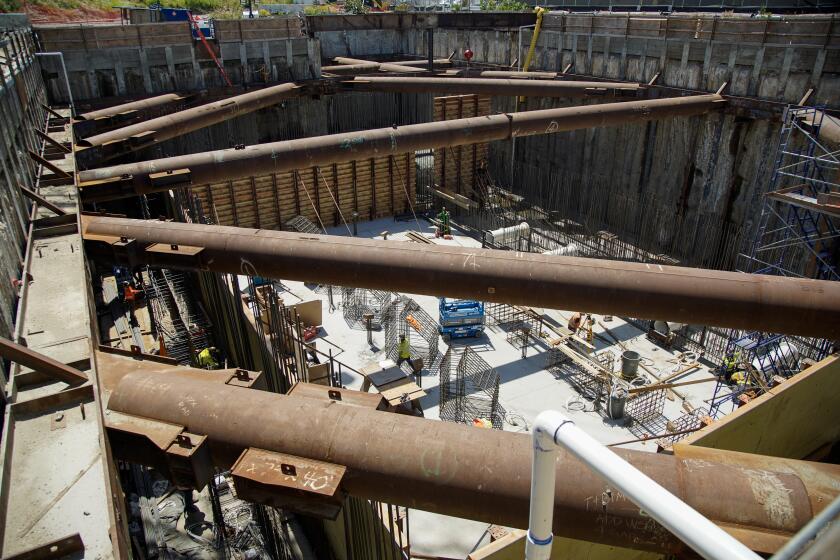San Diego to ban natural gas in new homes and businesses as part of climate fight

Ambitious plan also calls for retrofitting nearly all existing buildings in the city to phase out the fossil fuel by 2035
San Diego leaders have declared a war on natural gas to dramatically shrink the city’s carbon footprint and reach net-zero emission by 2035.
The City Council voted unanimously on Tuesday to approve a dramatically overhauled climate action plan that calls for banning the fossil fuel in new construction while also electrifying nearly all existing buildings over the next 12 years.
This story is for subscribers
We offer subscribers exclusive access to our best journalism.
Thank you for your support.
Dozens of cities across California have restricted installation of gas stoves and heaters in new construction, including Encinitas. However, retrofitting entire neighborhoods would be a massive undertaking for which there is little precedent.
The new climate blueprint, authored by Mayor Todd Gloria and his team, calls for drafting a new building ordinance as early as next year. Details on electrifying existing homes, office towers and other structures have yet to be hammered out.
“The window to reverse the dangerous trends of climate change is rapidly closing, and this moment demands aggressive action,” said Gloria at Tuesday’s public hearing. “Implementing this more ambitious plan won’t be easy, but the financial cost and human consequences of inaction are almost unimaginable.”
Targeting local sources of natural gas represents a sharp departure from the previous iteration of the plan, which relied more heavily on state and federal programs to curb city emissions.
In fact, phasing out natural gas from existing buildings, including all those owned by the city, represents nearly 40 percent of all greenhouse-gas reductions in the plan by 2035, according to city documents. Under the previous plan, drafted in 2015 by then-Mayor Kevin Faulconer, strategies to green-up buildings represented less than 2 percent of total cuts.
“There’s one action within this … that outweighs every other strategy, and that is the measure to phase out 90 percent of natural gas from existing buildings,” Jordan More, fiscal and policy analyst at the city’s Office of the Independent Budget Analyst, said at the public meeting.
City leaders recognized the major lift ahead. Councilman Joe LaCava pledged to help shepherd the new goals, calling on city staff to draft a detailed implementation and funding plan in coming months.
“We will meet our targets,” he said ahead of Tuesday’s vote. “I commit to working closely with the mayor’s office on the timelines.”
Many environmental activists lauded the city for its bold vision, while others were more reserved.
“The City Council is giving us hope that the city is serious now, but we have to wait to celebrate until we see real action,” said Nicole Capretz, executive director of the San Diego-based Climate Action Campaign.
The consequences of banning natural gas in new construction are expected to be “slight,” eliminating about 65 out of 32,000 residential construction jobs in the region, according to an independent analysis conducted by the Building Electrification Institute.
However, the broader vision of decarbonizing nearly all of the existing buildings in the city will have a “much more significant impact,” according to the report. The city has about 6,200 jobs associated with the distribution of natural gas, including electricians, plumbers and engineers. While some workers will likely be able to secure employment elsewhere, about 1,900 specialized workers could find themselves in a tough spot.
Still, retrofitting buildings with electric stoves and heat pumps would create “thousands” of new jobs, the report found. Ensuring a smooth transition will likely require years of planning that allows workers to gain skills in other sectors, such as water and sewer.
“The city of San Diego climate action plan must include an action job plan, stronger worker protections and workforce standards to create good green energy jobs,” said Cristina Marquez, an organizer with the International Brotherhood of Electrical Workers Local 569.
Many strategies to rein in climate pollution in the updated plan remained largely unchanged. Officials are still looking to ramp up investments in local solar and other renewable energy projects through the city’s publicly run alternative to San Diego Gas & Electric, known as San Diego Community Power. The so-called community choice aggregation program launched last year and serves customers in San Diego, Chula Vista, La Mesa, Encinitas and Imperial Beach.
The city is also doubling down on a plan to reduce driving. Its vision calls for boosting housing density and overhauling streets to encourage half of all commuters to walk, bike and ride public transit by 2035 — although the city has tweaked its targets a bit, aiming for less transit and bicycle use and more walking.
However, getting people out of their cars has been a major challenge across sprawling Southern California.
The recent failure of a proposed tax hike in San Diego County, spearheaded by labor and green groups to dramatically expand the region’s rail system, represents a major setback for the city’s efforts to limit tailpipe emissions.
Get Essential San Diego, weekday mornings
Get top headlines from the Union-Tribune in your inbox weekday mornings, including top news, local, sports, business, entertainment and opinion.
You may occasionally receive promotional content from the San Diego Union-Tribune.

